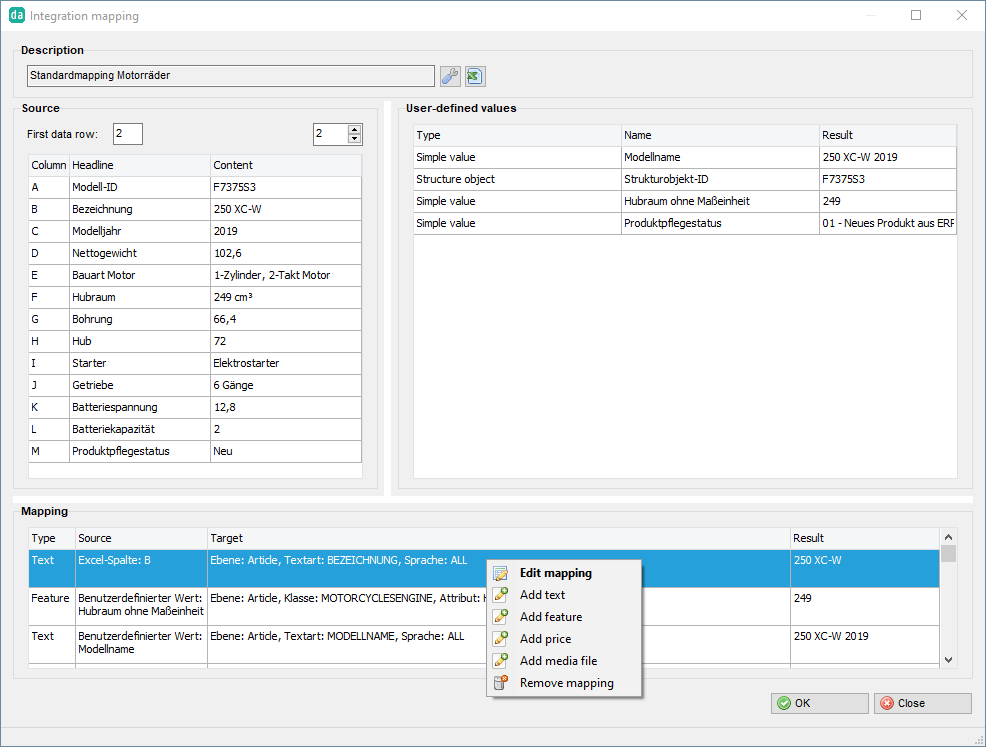

Data import configurator
Simply import supplier data
crossbase provides a graphical interface to analyze the structure of Excel and BMEcat files and to map columns to database fields. Transformation rules can be used for fully automatic conversions. These settings can be saved and reapplied to similar files.
Import of BMEcat files
To import BMEcat files, a field mapping to the typical BMEcat fields is created:
- Mapping supplier article number
- Mapping structures, e.g. ECLASS, ETIM
- Mapping short and long description
- Mapping price data
- Mapping attributes
- Mapping languages
- Mapping MIME for images and documents
The data can be visualized using a BMEcat viewer. The import profile can be saved so that similar imports can be carried out repeatedly.
Carrying out the import
When importing data from Excel or BMEcat files, a validation is carried out. This checks whether the data type, number format and value range are correct and whether text markups are XML-compliant. If new items are imported, they can first be created in a NEW folder and later classified in more detail. The result is summarized in a log file. An e-mail notification can be triggered in the event of errors.
Simulation of data imports
Typically, larger data imports are first imported into a test system and the result is roughly checked. This is cumbersome and inaccurate. For this reason, crossbase offers a simulation of the import with automatic testing options. After the simulation, it is reported which data is new, changed or removed ("DELTA") and which data remains unchanged.
Functionality
Field mapping
A column to be imported represents a field to be defined in the database. It is assigned to a structure and a level. For example, it is possible to import the content of the cells of a column into the product structure on the Product Group or Item level.
Information types
The content to be imported can be classified, for example as characteristics (weight, dimension, material, ...), prices (gross price, net price, ...), texts (short text, description, application, ...), illustrations (product photo, drawing, ...) and product relations (accessories, spare part, ...)
Transformation rules
The content of a column can be edited according to certain rules (e.g. replacing, deleting or adding text parts as well as converting numbers using formulas).
Import profiles
Different parameters can be recorded.
Automation
Import can be done automatically. To do this, some parameters can be be configured, such as connection data, the source directory with files and target directory for the log file.
We respect your privacy
AThis website does not use cookies to collect visitor data or behavior!


